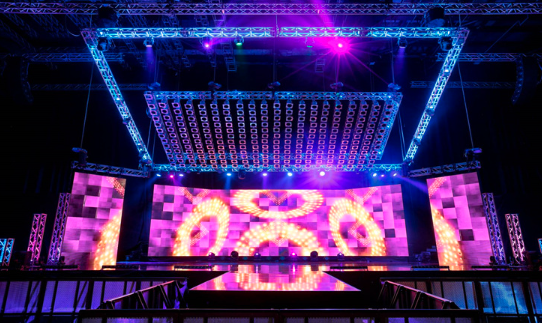Concert Video Screens: Enhancing Live Performances with Visual Spectacles

Concert video screens have become integral components of live performances, enriching the audience experience with immersive visuals and enhancing the connection between artists and concert-goers. This article explores the significance of concert video screens their technological aspects, applications in concerts, and the impact they have on the overall live music experience.
Introduction to Concert Video Screens
Concert video screens, also known as video walls or displays, are large-scale screens used during live performances to showcase visuals, live footage of performers, graphics, animations, and audience interactions. These screens play a crucial role in enhancing the visual spectacle of concerts and engaging audiences in a dynamic and immersive manner.
Technological Aspects of Concert Video Screens
1. Display Technologies
Concert video screens utilize various display technologies, including:
- LED Screens: Light Emitting Diode (LED) screens offer high brightness, color accuracy, and versatility in size and configuration, making them suitable for indoor and outdoor concerts.
- LCD Screens: Liquid Crystal Display (LCD) screens provide high resolution and color reproduction, often used in indoor venues where ambient lighting can be controlled.
2. Resolution and Pixel Density
High-resolution screens ensure sharp and detailed visuals, essential for displaying close-ups of performers and intricate stage designs. Pixel density determines the clarity of images and videos shown on the screens, contributing to a more immersive audience experience.
Read also: Maximizing Efficiency: How Metal Framing Companies Use Technology
3. Brightness and Viewing Angles
Screens for concerts are designed to deliver high brightness levels to maintain visibility under varying lighting conditions, both indoors and outdoors. Wide viewing angles ensure that audiences across the venue can enjoy clear and vibrant visuals without distortion.
Applications of Concert Video Screens
1. Stage Backdrops and Visual Effects
Concert video screens serve as dynamic stage backdrops, displaying live feeds of performances, custom visuals, animations, and synchronized content that enhance the concert’s atmosphere and storytelling.
2. Audience Engagement and Interaction
These screens engage audiences by showcasing real-time footage of the concert, close-ups of performers, crowd reactions, and interactive content such as social media feeds and live polls.
3. Artistic Expression and Brand Integration
Production teams utilize concert video screens to create immersive visual experiences that complement musical performances, incorporating branding elements, sponsor messages, and artistic visuals that resonate with the audience.
Benefits of Concert Video Screens
1. Enhanced Visual Impact
Concert video screens amplify the visual impact of live performances, creating a multisensory experience that complements music and enhances audience immersion in the concert experience.
2. Versatility and Adaptability
These screens are versatile in size and configuration, accommodating various stage designs and venue sizes while supporting different artistic visions and production requirements.
3. Brand Visibility and Sponsorship Opportunities
Concert video screens offer valuable opportunities for brand integration and sponsorship, allowing brands to reach a captive audience of concert-goers through targeted advertisements and promotional content.
Future Trends in Concert Video Screens
As technology evolves, future trends in concert video screens may include:
- Integration of Augmented Reality (AR) and Virtual Reality (VR): Enhancing interactivity and immersion through AR and VR technologies that allow audiences to engage directly with concert visuals.
- Advanced Display Technologies: Continued advancements in display technologies, including higher resolutions, improved color accuracy, and energy-efficient designs.
Conclusion
Concert video screens play a pivotal role in enhancing live performances by providing immersive visuals, engaging audiences, and supporting artistic expression and brand integration. As technology continues to evolve, these screens will continue to shape the future of live music experiences, offering innovative ways to captivate audiences and elevate the overall concert-going experience.




